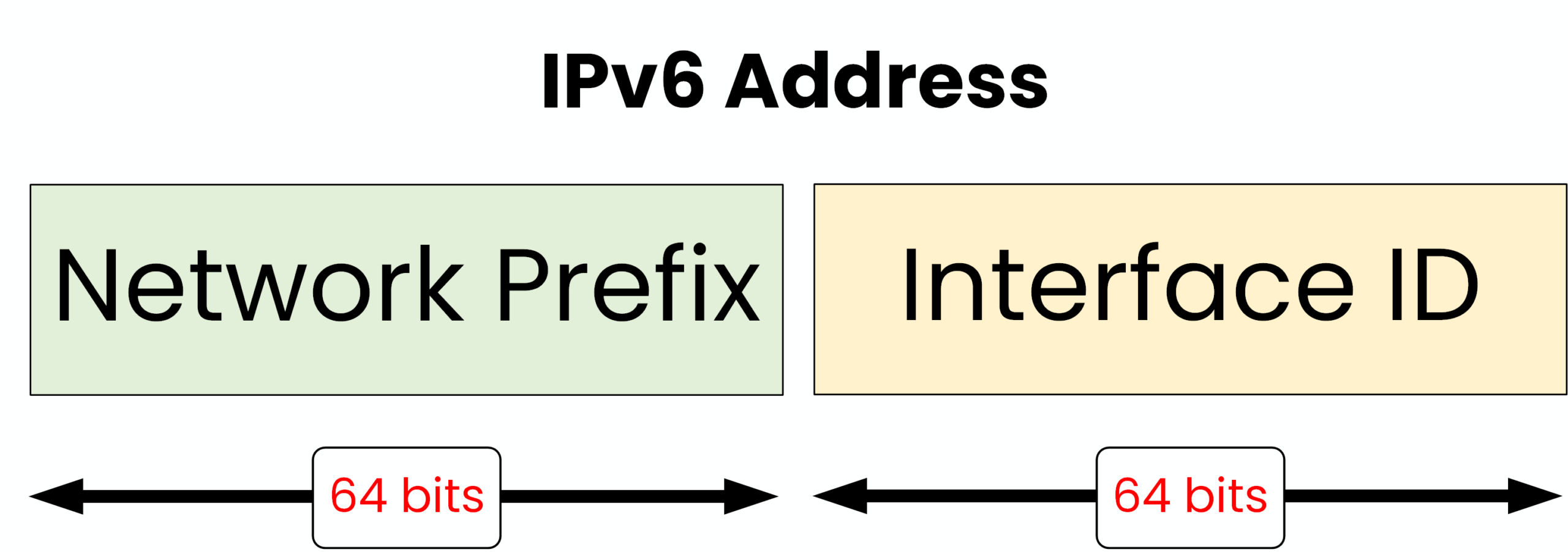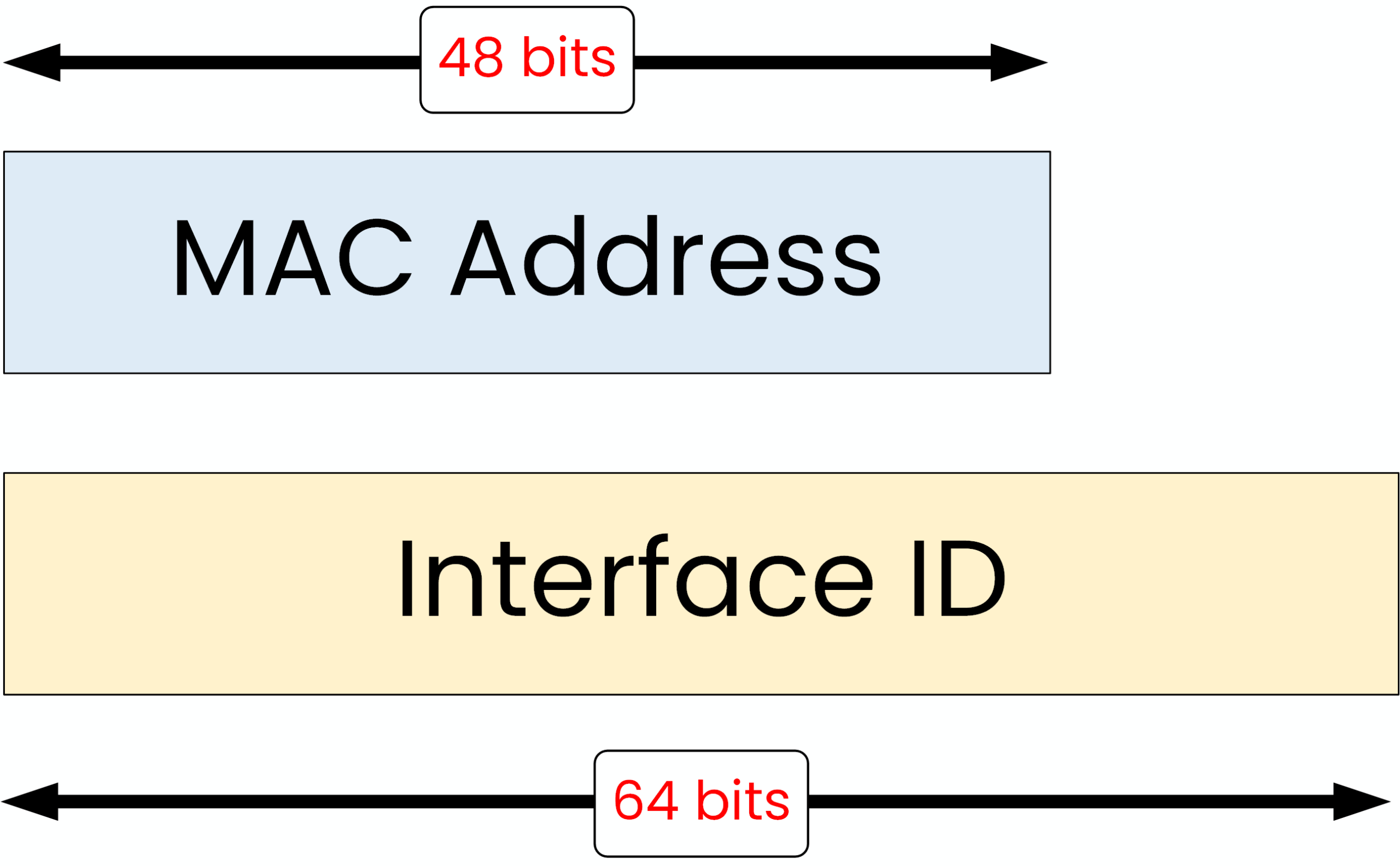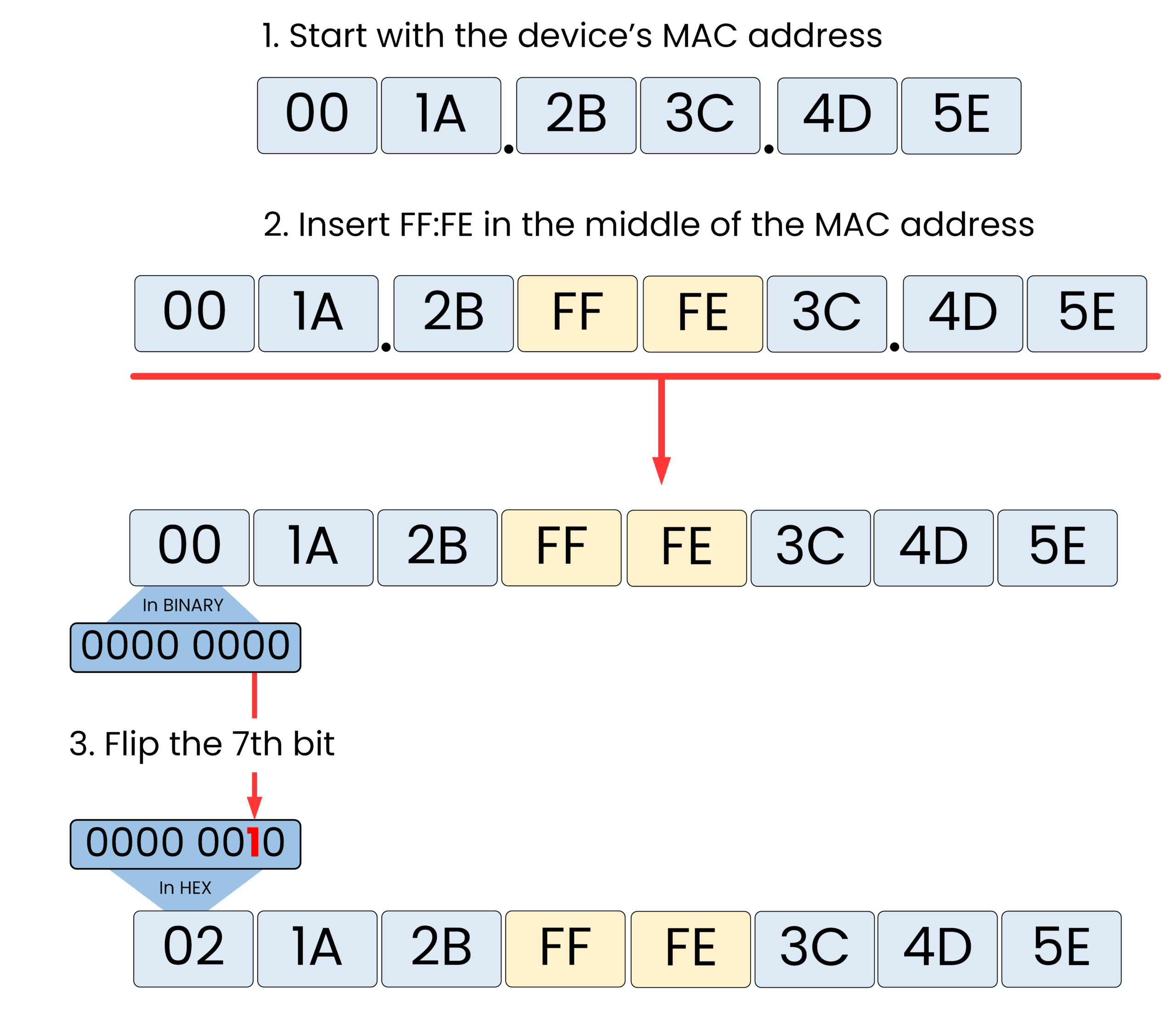In IPv6, every device must have a unique address to communicate on the network. To simplify configuration, devices can automatically generate part of their IPv6 address. One common method for this is called EUI-64.
EUI-64 allows a device to automatically create the host portion of its IPv6 address (the Interface ID) using its own MAC address.
IPv6 Address Structure Recap
An IPv6 address is 128 bits long and is divided into two main parts:

Figure 1 – IPv6 Address Structure
Network Prefix (first 64 bits): Provided by the router, it identifies the network.
Interface ID (last 64 bits): Uniquely identifies the device on that network.
But here’s the challenge: since EUI-64 uses the MAC address to create the Interface ID, and a MAC address is only 48 bits while the Interface ID must be 64 bits, we need a way to expand it.

Figure 2 – Converting a MAC Address to an Interface ID
The EUI-64 method solves this by applying a simple transformation to the MAC address, turning it into a valid 64-bit Interface ID.
Answer the question below
To expand a 48-bit MAC address into a 64-bit Interface ID, the EUI-64 process follows three simple steps:
Split the MAC address in two halves
Insert the fixed value
FF:FEin the middleInvert the 7th bit of the first byte
Let’s go through an example with the MAC address
021A.2B3C.4D5E
Figure 3 – EUI-64 Conversion Process (Step-by-Step)
After applying the three steps, the resulting Interface ID becomes →
021A.2BFF.FE3C.4D5EThis 64-bit Interface ID can then be combined with a
/64network prefix provided by the router to form a complete IPv6 address.Answer the question below
Which fixed value is inserted in the middle of a MAC address during EUI-64 conversion?
Now let’s apply the EUI-64 method in a real network scenario using a Cisco router.
We’ll configure interface
GigabitEthernet0/1on R1 to automatically generate its Global Unicast Address (GUA) using the prefix2001:db8:0:1::/64and the EUI-64 format.40 % Complete: you’re making great progress
Unlock the rest of this lesson
If you’d like to continue your CCNA journey, simply create your free account.
Access all CCNA lessons
Practice with hands-on labs
Train with Practice exams and Quizzes
Progress tracking in your dashboard
Made by network engineers - CCNP certified
learners globally
EUI 64 in IPv6
EUI-64 is a method in IPv6 that automatically generates the Interface ID from a device’s MAC address. In this lesson, you’ll see how it works, how to configure it on Cisco routers, and when it should or shouldn’t be used.